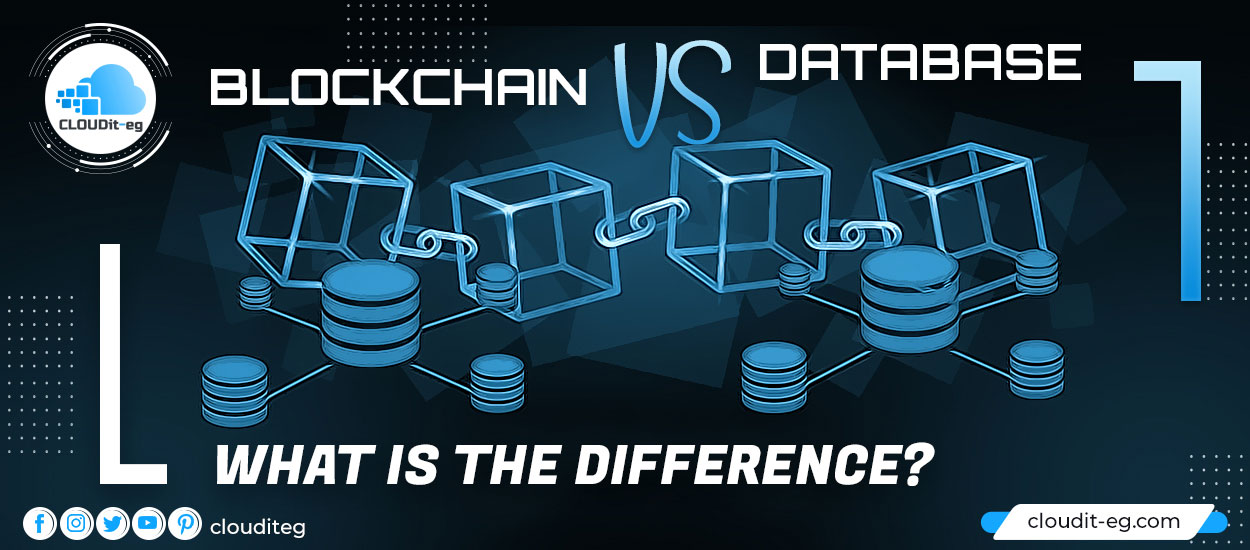Bitcoin, the first cryptocurrency, was initially conceptualized and created to be a digital currency. However, blockchain technology (the technology behind most cryptocurrencies) has since evolved to serve a variety of purposes; using a public registry to store the data.
Essentially, the difference between blockchains and databases is that blockchains exist on networks of computers. In addition, databases are saved on centralized servers. Each method of data storage has its own set of advantages and limitations; which we will now develop.
Blockchains vs. Databases – So Which One Is Better?
Information stored in blockchains cannot be modified, but only added.
To change the information stored on a blockchain, a network-wide consensus is required. In other words, every node on the network should approve the change. Since there are usually hundreds, if not thousands of nodes on a given blockchain network, it would be next to impossible to make such a change. A database generally requires permission from its administrators; or special software to edit or delete information.
While a database often only contains the most recent information, a blockchain contains all the information that has been added to it. Therefore, a blockchain may be better suited to contain pieces of information that require history; such as marriage, birth and death certificates, and other types of legal documents. Furthermore, a database is better suited to contain information subject to change; such as research records which may require updating to maintain accuracy and avoid confusion.
Because blockchain-based networks are decentralized, data is impervious to hacking.
When a large group of data is stored on a central server, an attacker who accesses the server can collect a large amount of data at once. This can have dire consequences. So, for example, if a bank’s server is hacked, thousands of customers can fall victim to identity theft and fraud. Also, if the server is destroyed, the data is destroyed with it. Finally, as a result, institutions that use centralized servers to protect large amounts of valuable data may spend huge sums of money to keep them secure.
In a blockchain-based network, more than half of the nodes would have to be compromised to access the encrypted data; and which would leave users in vulnerable positions. This is called a 51% attack. However, there has never been a case of such an attack recorded; for the moment, it is purely theoretical.
Because blockchains are distributed ledgers, encryption of information on them requires a lot of computing power.
Many blockchain networks, like Bitcoin, are not allowed; they are not “read-controlled” (anyone can read them), or “write-controlled” (anyone can create a new block). However, blockchains can be authorized, which means that only those who have been granted access can read them; or create new blocks.
Either way, hiding data in a blockchain requires heavy encryption, which, in turn, requires a bit of computing power. So, therefore, if the information is to be kept private, it may be better to store the data in an offline database.
Processing a transaction on a blockchain requires approval from the entire network. Therefore, storing data on a blockchain can take much longer than on a centralized database.
The Bitcoin blockchain network has recently been the cause of some feud in the Bitcoin community. This is because the blockchain has grown so large over time that transactions can take up to an hour. There have been several ideas on how to resolve this. However, so far, a lot of developments have resulted in the creation of a new cryptocurrency; and few have resulted in improvements in transaction speed on the existing Bitcoin network.
Therefore, if data needs to be stored quickly and efficiently, a centralized database may be the best option. At least for the moment. It is possible that there will one day be a cryptocurrency powerful enough to solve the problem.
Navigate the world of Blockchains
To conclude, cryptocurrency is still in its infancy. Its potential for technological progress arouses a certain enthusiasm; as well as its potential to attract the attention of investors. However, knowing which cryptocurrencies will succeed in breaking through requires a substantial technical understanding.




